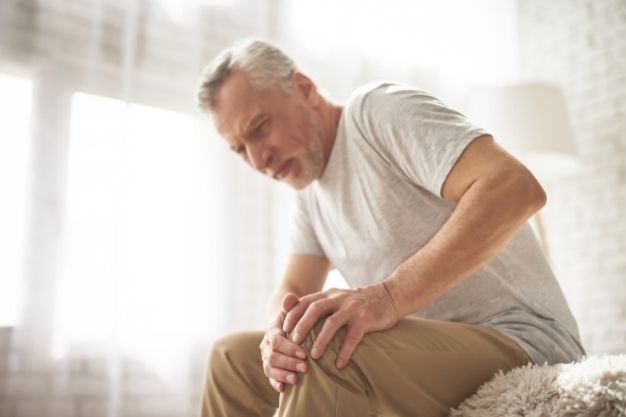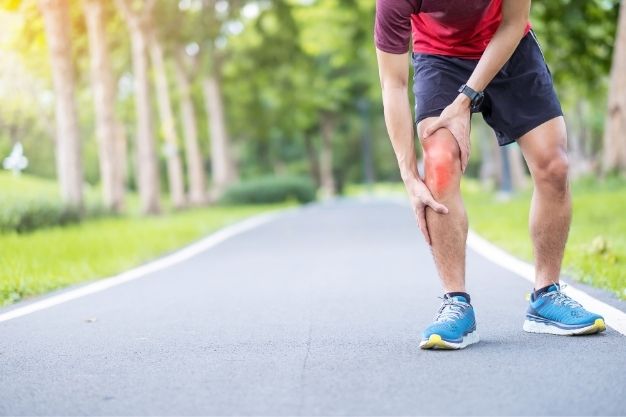The most frequent type of joint disease is osteoarthritis (OA). The metabolic breakdown of cartilage in the synovial joints causes this persistent, degenerative condition. Joint soreness, stiffness, and edema are symptoms that appear gradually. Read the page attentively to learn more about osteoarthritis risk factors and their types.
Some joints, such as the ankles, may be spared due to the articular cartilage’s specific resilience to loading forces. Lifestyle adjustments (diet, exercise), homeopathy treatment are choices for reducing pain and impairment.
Osteoarthritis can be classified as primary or secondary to a known cause.
What causes osteoarthritis at first glance?
People over the age of 50 are more likely to get osteoarthritis. Overuse of your joints destroys the cartilage, resulting in pain and swelling. Water builds up in the cartilage, causing the proteins to break down. It may begin to flake or tear in little spots. In difficult situations, all of the cartilage between the bones of a joint might be lost, causing the bones to rub together, making it more difficult and painful to utilize the joint.
Cartilage injury can also cause spurs (bony growths) around joints.
Osteoarthritis can strike numerous family members at once, implying that a gene mutation has been passed down from parents to children. Problems with collagen, a stiff protein present in connective tissue, rarely cause these situations.
Primary Osteoarthritis (OA)
Primary osteoarthritis is caused by the destruction of cartilage, a rubbery material that lowers contact in your joints. It can affect any joint, but the most prevalent are the fingers, thumbs, spine, hips, knees, and big toes.
Secondary Osteoarthritis
When another disease or medical condition injures your cartilage, you develop secondary osteoarthritis.
Osteoarthritis: Primary vs. Secondary
Even osteoarthritis comes in a variety of forms, as previously mentioned:
Primary osteoarthritis refers to cartilage and joint degeneration without a known cause. These arthritic changes are unexplained, which means they appear without warning and cannot be linked to another problem or condition.
When a past injury or pre-existing condition causes arthritis in a joint, it is called secondary osteoarthritis. Repetitive injuries, such as those sustained when playing sports, can lead to secondary osteoarthritis in the affected joint later in life. Secondary osteoarthritis can occur due to inflammatory disorders such as rheumatoid arthritis or gout.


Factors that are at risk
OA is known to be affected by several causes. Some of these variables are out of your hands. However, you can lower your risk of having OA as a result of lifestyle changes such as:
- Over usage of joints
- Obesity
- Posture
- History of the family
OA is a disease that can run in families. You’re more likely to get OA if your parents or siblings do. Doctors are baffled as to why OA runs in families. Although no single gene has been identified as the cause of OA, genes may play a role in developing the disease.
- Age
The stress and strain on joints are directly linked to OA. It grows more frequent as people get older. More than a third of persons over the age of 65, according to the Centers for Disease Control and Prevention (CDC), exhibit symptoms of OA.
- Gender
Both men and women can be affected by OA. It’s slightly more prevalent in men until they’re 45, according to the National Institutes of Health. It’s more prevalent in women after that. This could be due to the varied joint stressors that men and women face at different ages.
- Injury in the past
Injury to a joint increases the risk of developing OA in that joint.
- Obesity
Being overweight or obese puts the body under more stress and strain. This raises the chances of developing OA in the joints. Obese or overweight people are more likely to develop OA in the following areas:
- Knees
- Hips
- Spine
Obesity, on the other hand, is linked to OA in non-weight-bearing joints like the hands. This shows that increased joint mechanical stress or weight alone may not enhance the risk of OA.
- A few professions
Repetitive movements can place undue strain on your joints, and employing such repetitive actions can raise your chances of developing OA. The following are examples of job responsibilities that fall into this category:
- Lifting
- Climbing stairs
- Kneeling or crouching for more than an hour a day
People who engage in joint-intensive sports regularly may be at a higher risk of developing OA.
- Bad posture
Your joints might be strained if you sit or stand incorrectly. This can make you more susceptible to OA

How can I better control my OA while improving my quality of life?
For controlling arthritis and associated symptoms, the CDC’s Arthritis Program suggests five self-management options.
- Develop self-management abilities: Participate in a self-management education session, which teaches people with arthritis and other chronic disorders, such as OA, how to understand better how arthritis affects their lives and regulate their symptoms while leading a healthy lifestyle. Learn more about the self-management education programs recommended by the CDC
- Engage in some physical activity: According to experts, adults should engage in at least 150 minutes of moderate physical exercise per week. Every minute counts and any activity is preferable to none. Walking, swimming, and biking are examples of low-impact, moderate-intensity activities. Other chronic diseases, such as heart disease, stroke, and diabetes, can be reduced by regular physical activity. Learn more about the benefits of physical activity for those with arthritis
- Go to a program that promotes physical exercise: Participation in physical activity programs can help reduce pain and disability associated with arthritis and enhance mood and mobility for people concerned that physical activity will aggravate their OA or are unclear about how to exercise properly. Classes are held at YMCAs, parks, and community centers in the area. People with OA may benefit from these classes. Learn more about the physical exercise programs suggested by the CDC.
- Consult your physician: Attending regular meetings with your health care physician and following your prescribed treatment plan will help you take control of your arthritis. This is very critical if you have additional chronic problems like diabetes or heart disease
- Reduce your weight: Losing weight relieves pressure on joints, especially weight-bearing joints like the hips and knees, in those overweight or obese. Weight loss or maintenance can alleviate pain, enhance function, and decrease the progression of OA
- Take care of your joints: Arthritis can be triggered or exacerbated by joint injury. Choose joint-friendly activities such as walking, bicycling, and swimming. These low-impact movements pose little danger of injury and do not twist or put undue strain on the joints. Find out how to exercise safely if you have arthritis.
Treatment using Homeopathy
Osteoarthritis can be a tough condition to live with, but homoeopathy treatment at Dr. Positive Homeopathy helps you to overcome your arthritis safely without any side effects. It is critical to consult with your homeopath if you feel you have OA. Following a comprehensive evaluation, your homeopath can assist you in developing a treatment plan for osteoarthritis.








